Let Us Deliver
Get it? Lett-uce deliver? OK, it’s a terrible pun, but an interesting concept just introduced by Great Lakes Growers in Burton, Ohio. I mentioned the operation in the newsletter recently for its expansion efforts, but the folks there just announced a new endeavor Friday: home delivery service for its living lettuce and herbs.
You can see how the website is set up to handle orders HERE. Great Lakes Growers will be shipping through UPS and right now is accepting orders anywhere in Ohio. That could be expanded to orders shipped to neighboring states soon, according to Owner & CEO John Bonner. Why now? John cited time and location as reasons why some potential customers aren’t able to get to Great Lakes Growers partner retail stores. “We’ve been thinking about this for a long time and actually began the process of testing and implementing a salad home delivery service last summer,” he says. “The tests went extremely well in terms of how the produce held up during delivery, so then it just came down to developing an easy-to-use website and streamlining our process for the incoming orders.” He also cited recent lettuce recalls and says the service offers peace of mind for customers.
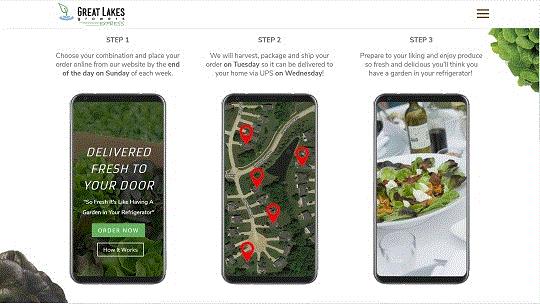
While we were conversing by email, I asked John how the expansion process is going. “Greenhouse steel and glass will be done (this) week then on to all the inside work,” he says. “Looking for July to start cranking out product. Already planning for another 3 acres in fall of 2019.”
If you’re keeping track, Great Lakes currently has about 1.5 acres under glass, and this construction doubles that to more than 3 acres. So the fall 2019 project he’s talking about is another 3 acres for a total of more than 6 acres and growing. That’s getting fairly large by leafy green hydroponic grower standards for a single location.

PanAmerican's Kitchen Minis
Consumers are looking for all types of fresh herbs, lettuce and veggies, whether or not they have a ton of space to grow them in. That’s why PanAmerican Seed purchased the Kitchen Minis line of indoor vegetables from Dalina Genetics, a Danish breeder of ornamental and edible plants. According to a media release, the purchase includes breeding lines as well as commercial products of compact tomatoes and cucumbers.
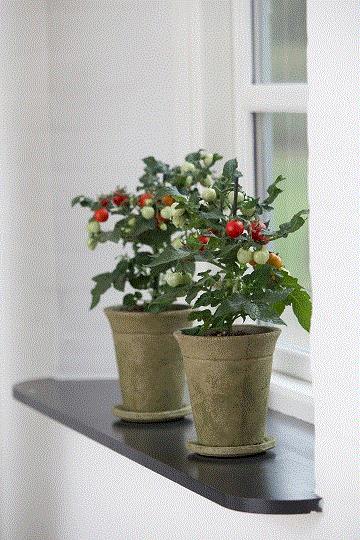
“Urban and small-space gardening is a strong trend around the world, especially by younger consumers,” says Sean Valk, global sales director of PanAmerican Seed. “With the innovative breeding these new genetics bring, partnered with our best distribution of seeds, there’s real potential to take this segment to the next level.”
The indoor vegetable program from Dalina joins the company’s existing range of indoor edible pepper genetics that came with PanAmerican Seed’s purchase of Ex-Plant in 2017. “Besides their compact growth habit, which eliminates the use of growth-regulating chemicals, the Kitchen Minis’ taste and shelf life at retail has been an important aspect of continued breeding,” the media release notes.

Turning Coal Country High Tech
A fascinating find from Chris Beytes:
Eastern Kentucky: the next Netherlands? That’s how a fellow named Jonathan Webb sees the Bluegrass state. A Kentucky native, he wants to turn the impoverished Appalachia coal-mining region into a high-tech ag powerhouse by bringing hydroponic greenhouse technology to the region. And he’s got some big backers, including AOL founder Steve Case.
I learned all this Sunday night on 60 Minutes. Now, I don’t expect to find horticulture featured on 60 Minutes, although it has happened on occasion—for instance, that’s how I learned about MIT’s “Food Computers.”
Last Sunday night, the news show did a feature on Steve Case’s quest (via bus) to bring venture capital to the middle of America, rather than letting it all stay concentrated on the coast. The project is called “Rise of the Rest,” and he’s joined by some serious business leaders, including Amazon founder Jeff Bezos, Starbucks’ Howard Schultz and former Google CEO Eric Schmidt. They want to find and fund entrepreneurs in areas of the country usually overlooked by venture capitalists.
One such investment is in Jonathan Webb’s company, AppHarvest.
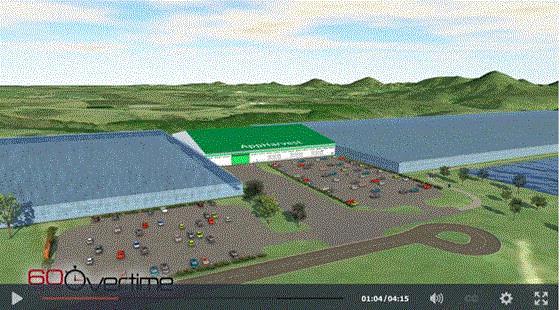
Artist's rendition of an AppHarvest facility. I love that it's an actual real-world greenhouse, not a warehouse or, heaven forbid, a converted coal mine.
“We could fit the entire country of the Netherlands inside of Eastern Kentucky in landmass,” Jonathan told WKYT in Lexington. “The Netherlands has the second most agricultural exports in the world, only behind the U.S. They’re growing indoors, using artificial lighting to maximize yields, while also putting the water directly to the roots of the plants. We need 80 to 90 percent less water than open-field agriculture. We’re able to grow year round because of the controlled environment.”
In addition, Eastern Kentucky is within a day’s drive of 70% of the U.S. population. And Jonathan feels the residents of the region have what it takes to make such a project successful.
“It’s that work ethic, that tenacity, that grit that we’re trying to harness for this industry.”
Jonathan spent two years trying to line up their first greenhouse site only to have the deal fall apart. Now they’ve got their eyes on a new parcel in the city of Morehead, where they’re planning to build a 60-acre hydroponic tomato range that would employ about 285 full-time workers. Pay will be at least $13 an hour—nearly double the state’s minimum wage—plus benefits.
To prepare future employees for this site and at the additional facilities AppHarvest wants to build, AppHarvest is organizing AgTech education programs in high schools, specializing in entrepreneurship and high-tech agriculture. They’re currently working with the University of Pikeville and Shelby Valley High School, where students are growing lettuce in a container farm.
Says Jonathan, “We’re positioning the eastern part of our state to be the AgTech of America.”
That project sounds promising. I like that it’s greenhouse-based—a proven technology. I like that he’s been to the Netherlands to see it done on a large scale. And I like that all eight folks listed as leaders in AppHarvest are Kentucky natives. They’ll know the challenges of the geography, the culture and the climate.
Expect us to follow this project closely to see if they can make it work.

Vaccine Available for Tomatoes
Biobest announced recently a new vaccine is available in the U.S. and Canada to inoculate tomatoes against Pepino Mosaic Virus (PepMV). The vaccine is called PMV-01 and is registered under the name of DCM (De Ceuster Meststoffen NV) and marketed by Biobest.
In the U.S., DCM has started the application process for state permits based on federal EPA registration, and according to Biobest, growers should be able to vaccinate tomato crops later this year. The first crops in British Columbia and Alberta have already been vaccinated, while growers in Ontario are still waiting for final provincial government approval.
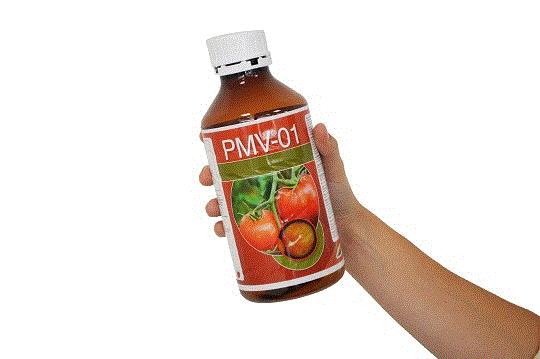
“Canadian and American tomato growers have been waiting for years for a solution to prevent PepMV damage,” says Veronica Cervantes, product manager at Biobest Canada/USA. “Growers have closely followed the use of PMV-01 in Europe and have seen the results. We truly appreciate the support we received from growers, propagators and grower organizations throughout the registration of PMV-01.”
Here’s how it works: PMV-01 contains a mild PepMV isolate that is applied preventatively on healthy young plants at the start of the season, and the plant immune system detects and attacks other aggressive PepMV isolates before they can fully develop. “PMV-01 is applied within a vaccination strategy adapted to the local circumstances and supported by rigorous molecular testing before and after application,” notes the media release. “The PMV-01 vaccination strategy has been implemented in Europe and Morocco for several years and the efficacy has been proven on multiple tomato varieties, under diverse climate conditions and different types of greenhouses.”

Signify Adding Manufacturing Line in Mexico
Citing increasing growth in the horticulture market, Signify announced last week it would be adding a line of horticulture LED production at its existing factory in Camargo, Mexico. Previously, the Philips GreenPower LEDs were made in a factory in Poland and shipped to North America by boat.
“We are very excited that we can enhance our support to customers in North America by reducing their delivery times—it’s a necessity,” says Udo van Slooten, business leader horticulture at Signify. “We see very strong demand for horticultural LEDs as customers increasingly understand the benefits: improved predictability, higher quality product and higher yields. Particularly the strong increase in number of customers in the fruit, vegetables, floriculture and cannabis segments in the last two years, meant that we needed to make steps to deliver faster to this important market.”
Signify’s media release on the move highlighted a statistic from market analysis firm ReportLinker that the horticulture lighting market is projected to grow by more than 20% per year until 2025.
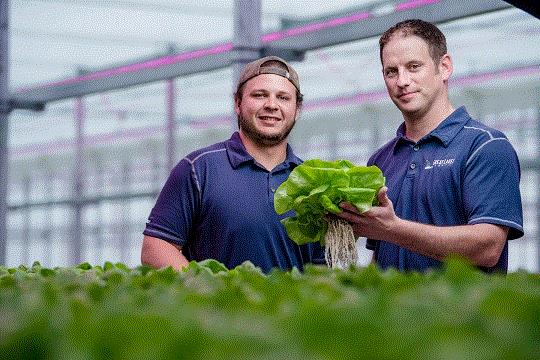
Side note: Great Lakes Growers, which we talked about above, is featured in the photo provided by Signify. Click HERE to see a case study on John’s in-house trial with LED toplighting.




As always, feel free to email me at jpolanz@ballpublishing.com with comments, questions, news and views.
Until next time,

Jennifer Polanz
Editor-at-Large
Inside Grower
This email received by 27,056 loyal readers!
Interested in advertising in Inside Grower? Contact Paul Black or Kim Brown and they'll show you how easy, effective and affordable it is.